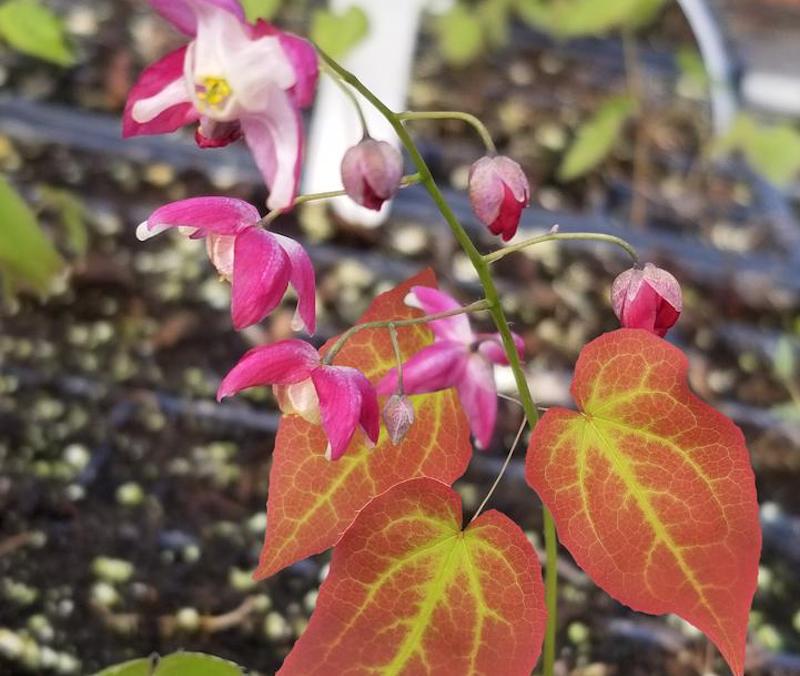Barrenwort, also known as Epimedium and Bishop’s Hat, is an indispensable, attractive, tough woodland perennial. With so many wonderful attributes, they are one of the best plants to use in your landscape. They are a great choice to plant beneath trees and shrubs, tolerating moisture competition in difficult-to-grow, dry shade garden areas.
They produce delicate blooms that provide early spring color with minimal effort on your part. Effortless, rugged, easy to grow, Barrenwort is ideal in a shaded rock garden, as a groundcover under trees and shrubs, or in a mixed partial shade planting.These plants tolerate rabbit and deer damage, heavy shade, dry soil, and shallow, rocky soil. Barrenwort is hardy in USDA hardiness zones 5 - 9.

What You Need To Plant Barrenwort
- Shovel
- Compost or manure
- Garden spade
- Dappled or Partial Shade area
- Water source
- Mulch
Where to Plant Barrenwort
Although Barrenwort will tolerate being planted in full shade, you’ll often get the best blooms when planted in partial shade to dappled sun (direct sunlight for only part of the day, equivalent to 2-4 hours). Barrenwort thrives in morning sunlight, but avoid late afternoon direct sun, which can burn the finely textured leaves.
Plant Barrenwort in soil well amended with organic matter such as compost, and keep the soil moist during summer to speed up root development. Barrenwort ideally prefers loose, organically rich loam soil with even moisture, but will easily tolerate dry spells once the plant becomes fully established.

Barrenwort Spacing
Mature size and growth rate will vary among cultivated varieties with heights ranging from 8”- 24” and widths of 1’-3’. Slow to establish when first planted, give Barrenwort a season to fill out and you’ll be impressed with this beautiful ground cover. Space Barrenwort approximately 12” apart to help encourage a quick fill of the space.
Steps To Plant Barrenwort
To get your new plants off to a good start, amend the top 6”- 8” of existing garden soil with organic matter (2/3 soil to 1/3 compost). Additionally, you can sprinkle an all-purpose starter fertilizer such as Espoma Organic Bio-Tone Starter Plant Food into the bottom of the hole, and keep roots moist their first season to get them off to a healthy start. Barrenwort appreciates mulch around the base of the plant to keep its roots cool and retain moisture.
Step 1 - Locate a planting site in partial to dappled shade
Step 2 - Dig a hole twice as wide as the container it came in
Step 3 - Gently loosen the roots of the plant with your fingers if you notice the plant is rootbound
Step 4 - Place the plant in the hole so its crown is slightly above the soil line
Step 5 - Backfill with a mixture of native soil and compost
Step 6 - Water thoroughly to saturate the planting site and fill in any air gaps around the roots
When to Plant Barrenwort
Barrenwort will do best when planted in spring, early fall, or on a cool morning of a summer day. When planting in summer, be sure to water your plant regularly to avoid letting the roots dry out. Your plant will do best when it's planted early in the season to give it time for its roots to settle in before it encounters harsh winter weather. You can cut old foliage back in late winter to fully appreciate the plant’s blooms in early spring.
Transplanting Barrenwort
Divide Barrenwort every 3 - 5 years to rejuvenate the plant. Be sure to divide and transplant when the weather is cool. Dig up the entire plant, being careful to extract as much of the root ball as possible. Use a sharp garden spade to divide the plant into smaller clumps. Plant the clumps in other partial shade areas of your garden and water thoroughly.
 |
Author Chris Link - Published 01-12-2023 |
